Energy costs will continue to rise in certain regions across the U.S., particularly in the states of New York, New England, Texas, and California. PG&E customers in California have already seen prices spike, with utility rates increasing 13%. Experts expect additional rate hikes for PG&E customers later this year.
K-12 districts nationwide are vulnerable to rising energy costs — but can mitigate their impact, beginning with an energy audit or facility condition assessment. At SitelogIQ (SIQ), we conduct energy audits for K-12 districts to reveal consumption behaviors and costs and recommend energy-saving solutions. For example, through a SIQ audit of annually bundled rates published by PG&E, our SIQ Energy Advisory Team identified an unprecedented 32% average cost increase and immediately alerted customers of the drastic electricity rate increase.
For many of our K-12 customers, LED lighting upgrades throughout school grounds and classrooms can open the door for funding and sustainable milestones.
3 Advantages of Installing LED Lights in the Classroom
Power is one of the most significant budget expenses for school districts. Installing LED lighting or retrofitting existing systems in classrooms, parking lots, and gymnasiums can result in substantial savings, even amid surging energy prices. Explore the primary benefits of LED lighting solutions for districts, students, and teachers.

1. Reduce Energy Use and Operational Costs
LEDs last as much as 25 times longer than incandescent lights. In addition, LED bulbs use up to 90% less energy than incandescent bulbs and are up to 44% more efficient than fluorescent tubes.
Since LEDs require less power and have longer life spans than incandescent and fluorescent light sources, your district can reduce energy use and maintenance needs by installing LED lights. An LED upgrade can potentially save your district thousands of dollars annually.
To illustrate cost savings that could apply to K-12 districts, consider the results of an energy savings project completed with Marysville Joint Unified School District. The project, which included lighting upgrades, saves the district over $1.5 million per year.
Connecting a facility’s LEDs to a network, such as the Internet of Things (IoT), can also cut energy costs. For example, you can program lighting systems that connect to IoT and integrate occupancy sensors to dim or turn off automatically when the room is vacant. You can also configure IoT-controlled LEDs to respond and adjust to natural daylight. Districts can expect up to 75% energy savings per classroom by installing responsive and automatic lighting systems.
2. Reach Sustainability Goals
Upgrading each facility’s lighting system to LEDs can help your district achieve sustainability goals. LEDs use less energy, have long life spans, and are recyclable — reducing waste, energy use, and overall carbon footprint.
Since LEDs consume less power than other light sources, they fit seamlessly into a renewable energy system, such as solar-powered configurations. Through a programmatic approach, LED lighting can optimize your district’s sustainability efforts and reduce energy consumption substantially.
Overall, LED lighting can help your district reduce its carbon footprint by up to 30%, roughly.
3. Access Numerous Funding Opportunities
K-12 districts with limited budgets and resources may hesitate to invest in sustainability efforts. Fortunately, government grant programs enabled by federal acts such as the Infrastructure Investment and Jobs Act (IIJA), also called the Bipartisan Infrastructure Law, and the Inflation Reduction Act make it feasible for districts to install LED lighting to enhance the K-12 learning environment and initiate other energy-saving changes.
For instance, the Clean School Bus Program, which is funded by the IIJA, has $5 billion to help districts replace their current school bus models with zero- or low-emission buses. Durham Public Schools, for example, received $15 million through the Clean School Bus Program with the support and guidance of SIQ’s experts. The district will use the funds to purchase 38 electric school buses.
At SIQ, we have experience helping districts identify funding opportunities in their state, as well as available partnerships to help sustainability become a part of life for students, staff, and the local community.

Benefits Aren’t Benefits Without Seeing Results
Installing LEDs or retrofitting current systems is a step toward a more sustainable district — but it is only part of the solution. Districts must track the results of lighting upgrades to provide transparent reports to internal and external stakeholders, make data-backed decisions, and secure funding for future sustainability efforts.
Facility management technology can support your district in tracking building improvements to prove ROI and gain insight into energy consumption. Our facility intelligence platform, mySiteIQ, allows districts to capture and monitor energy-use data accurately and consistently. The platform enables stakeholders to identify areas that need improvement as well as prepare for long-term capital planning.
Our LED Lighting Solutions for K-12 Schools
Enhancing the lighting systems in your schools to decrease energy costs and advance sustainability goals is within reach. The first step is to contact SitelogIQ.
Our process begins with an energy audit to pinpoint high-need opportunities and determine a tailored, energy-efficient lighting solution. In addition, our energy and K-12 facility experts can identify the proper financing solutions or recommend grant opportunities to help you address budget limitations.
It is our mission to help schools and local communities achieve energy efficiency and optimize facility performance — but it begins with you. Contact us today to learn more about our energy-saving solutions for K-12 facilities.


